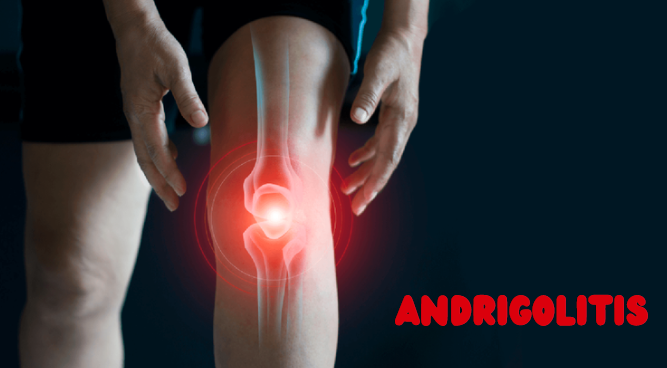Introduction
The term “andrigolitis” has recently gained attention in discussions about joint pain and arthritis-like symptoms, sparking curiosity and concern among those who suffer from chronic pain. While it is not a medically recognized condition, the rise of andrigolitis in online discussions suggests a growing interest in understanding and categorizing joint pain symptoms that do not fit neatly into existing diagnoses.
This article aims to provide a comprehensive exploration of andrigolitis, delving into its origins, potential symptoms, possible causes, and the broader implications for those experiencing unexplained joint pain.
What is Andrigolitis?
Andrigolitis is not officially recognized by the medical community, which makes it a unique and somewhat controversial term. The word itself appears to be a fusion of “andro,” referring to something related to men, and “itis,” a suffix commonly associated with inflammation.
Despite its unofficial status, andrigolitis has been used in discussions to describe a set of symptoms that closely resemble those of arthritis, such as joint pain, stiffness, and swelling. However, the lack of clinical recognition means there is little in the way of standardized treatment protocols or diagnostic criteria for those who might identify with this condition.
The Origins of Andrigolitis
The exact origin of the term andrigolitis is unclear, but it seems to have emerged in online forums, social media discussions, and alternative health circles. The term may have been coined by patients who felt that their symptoms were not fully captured by existing medical diagnoses like rheumatoid arthritis, osteoarthritis, or other forms of inflammatory joint disease.
The absence of andrigolitis from medical literature suggests that it may have been created to describe a phenomenon that patients feel is not adequately addressed by current medical knowledge.
Possible Symptoms of Andrigolitis
Although andrigolitis is not an officially recognized condition, the symptoms attributed to it are similar to those of other forms of arthritis. These may include:
- Chronic Joint Pain: Persistent pain in the joints, often described as dull, aching, or throbbing.
- Stiffness: Difficulty moving joints, particularly after periods of rest or inactivity.
- Swelling: Visible inflammation around the joints, which may feel warm to the touch.
- Fatigue: Generalized tiredness, possibly due to chronic pain and the body’s inflammatory response.
- Limited Range of Motion: Difficulty in fully moving affected joints, which can impact daily activities.
These symptoms can significantly affect quality of life, leading those who suffer from them to seek out explanations and treatments beyond conventional medicine.
Possible Causes of Andrigolitis
Since andrigolitis is not recognized by the medical community, its causes are speculative. However, several theories could explain why someone might develop symptoms that could be classified under this term:
- Inflammatory Response: Like other forms of arthritis, andrigolitis may be linked to an abnormal immune response that causes inflammation in the joints.
- Autoimmune Factors: Some speculate that andrigolitis could be related to autoimmune conditions where the body’s immune system mistakenly attacks its own tissues.
- Hormonal Imbalances: Given the possible etymology of the term (with “andro” possibly suggesting a link to male hormones), andrigolitis could be theorized to be connected to hormonal changes or imbalances, particularly in men.
- Chronic Stress: Ongoing stress has been linked to various physical ailments, including inflammation and joint pain. It’s possible that chronic stress could exacerbate symptoms of andrigolitis.
- Environmental Factors: Exposure to toxins, pollutants, or other environmental factors could potentially contribute to joint inflammation and pain.
How Andrigolitis Differs from Recognized Conditions
One of the key reasons andrigolitis has gained traction is because it may describe symptoms that do not fit neatly into other diagnoses. Traditional forms of arthritis, such as rheumatoid arthritis or osteoarthritis, have well-established diagnostic criteria and treatment protocols. Patients who feel that their symptoms are not fully explained by these conditions may turn to a term like andrigolitis to describe their experiences.
For example, while rheumatoid arthritis is an autoimmune disorder that causes inflammation in the joints, and osteoarthritis is a degenerative joint disease caused by wear and tear, andrigolitis could theoretically encompass symptoms that are less understood or that overlap multiple conditions without a clear diagnosis.
The Role of Alternative Medicine in Treating Andrigolitis
Given the lack of recognition by mainstream medicine, individuals who identify with the term andrigolitis may turn to alternative therapies for relief. Some of these approaches may include:
- Herbal Supplements: Certain herbs and natural supplements, such as turmeric, ginger, and omega-3 fatty acids, are known for their anti-inflammatory properties and might be used to alleviate joint pain.
- Acupuncture: This traditional Chinese medicine technique involves inserting needles into specific points on the body to relieve pain and inflammation.
- Chiropractic Care: Some patients may seek chiropractic adjustments to improve joint function and reduce pain.
- Dietary Changes: Anti-inflammatory diets that focus on whole foods, lean proteins, and healthy fats may help reduce symptoms.
- Physical Therapy: Exercises tailored to strengthen the muscles around the joints can improve mobility and reduce pain.
The Psychological Impact of Unexplained Joint Pain
Living with chronic pain, especially when it is not officially recognized by the medical community, can have significant psychological effects. Patients who feel that their symptoms are not taken seriously may experience feelings of frustration, anxiety, or depression. The term andrigolitis may offer a sense of validation for those who feel that their pain is real but not adequately explained by current medical knowledge.
The Importance of Seeking Medical Advice
While the term andrigolitis may resonate with some patients, it is crucial to seek medical advice if you are experiencing chronic joint pain. A healthcare provider can help rule out other serious conditions, such as rheumatoid arthritis, lupus, or fibromyalgia, and can offer evidence-based treatment options. If you feel that your symptoms are not fully addressed by your healthcare provider, consider seeking a second opinion or consulting a specialist in rheumatology or pain management.
Potential Future Recognition of Andrigolitis
The emergence of terms like andrigolitis highlights the evolving nature of medical knowledge. As patients and healthcare providers continue to explore and understand complex symptoms, it is possible that andrigolitis or similar terms could eventually be studied more rigorously. Future research may shed light on why certain individuals experience joint pain that does not fit into existing diagnoses, potentially leading to new treatment approaches or even official recognition of andrigolitis as a medical condition.
FAQs about Andrigolitis
Q: Is andrigolitis a real medical condition? A: Andrigolitis is not currently recognized by the medical community as an official condition. It is a term that has surfaced in discussions about joint pain and arthritis-like symptoms, but it lacks clinical validation.
Q: What are the symptoms of andrigolitis? A: The symptoms attributed to andrigolitis include chronic joint pain, stiffness, swelling, fatigue, and limited range of motion. These symptoms resemble those of other forms of arthritis.
Q: How is andrigolitis treated? A: Since andrigolitis is not an officially recognized condition, there is no standardized treatment. However, some individuals may find relief through alternative therapies such as herbal supplements, acupuncture, chiropractic care, and dietary changes.
Q: Can andrigolitis be diagnosed? A: There is no official diagnostic criteria for andrigolitis, as it is not recognized by the medical community. If you experience unexplained joint pain, it is important to consult a healthcare provider to rule out other conditions.
Q: Is there any research on andrigolitis? A: As of now, there is no significant research on andrigolitis, largely because it is not an established medical condition. However, the term’s emergence may prompt future studies.
Conclusion
Andrigolitis represents an emerging concept in the ongoing discussion of joint pain and arthritis-like symptoms. While not recognized by the medical community, it highlights the need for continued exploration of unexplained chronic pain and the importance of validating patient experiences.
As medical knowledge evolves, the understanding and treatment of conditions like andrigolitis may also progress, offering new hope for those who suffer from chronic joint pain. In the meantime, it is essential for individuals experiencing these symptoms to seek professional medical advice and explore both conventional and alternative treatment options.


No responses yet